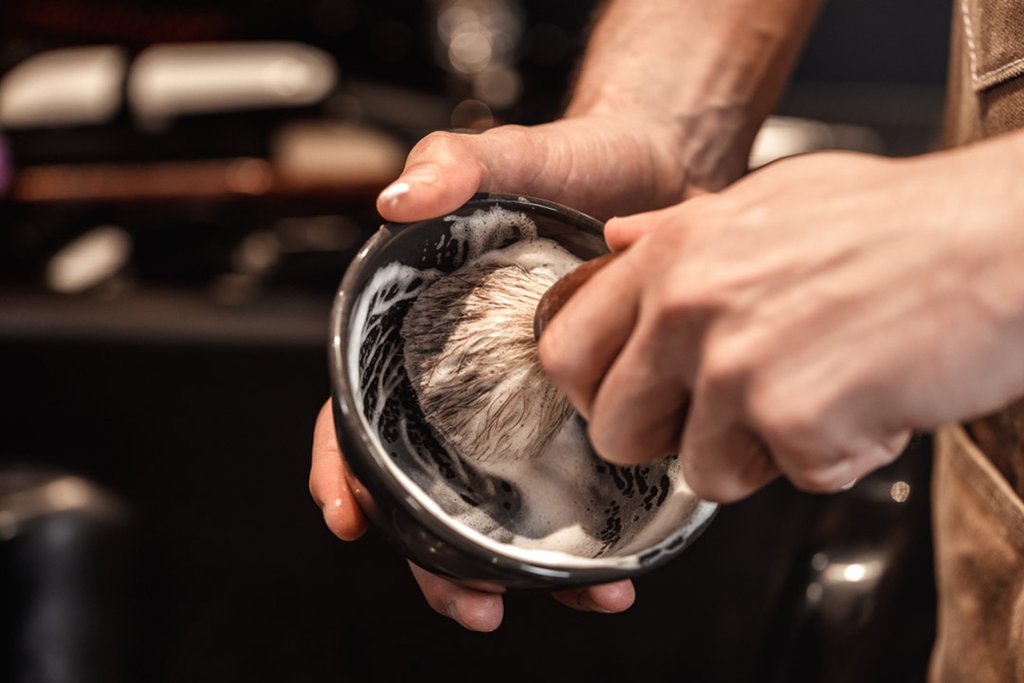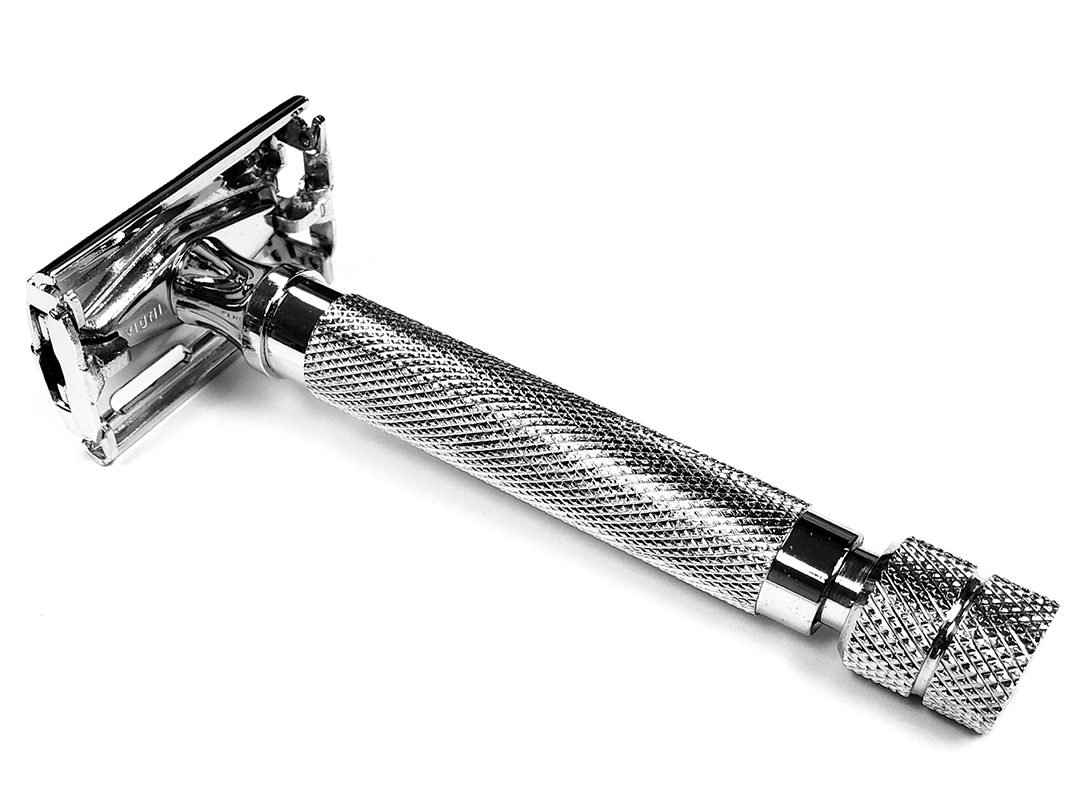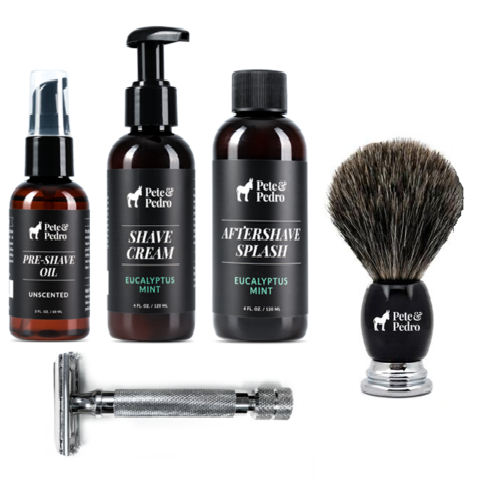How to Use a Safety Razor
Any guy looking for a quality, affordable and borderline fun shave must get to know the safety razor. This handy little tool, also referred to as a butterfly safety razor (because it will twist-to-open to put the blades in - way easier), is basically the old-school version of the shaver you’re probably used to buying at the grocery store. And for a variety of reasons we’ll cover below, it’s back in fashion, and we’re driving the bandwagon.
What Is a Safety Razor?
A safety razor is a razor with a handle and a double-edged steel blade that usually has a protective guard to protect the user from cuts. (But don’t be fooled–these babies can nick the skin, so you want to know exactly how to use one before you begin.) They differ from cartridge razors because they only have a single blade that usually doesn’t tilt, so you have to adjust your hand to shave at the proper angle yourself. There is a bit of a learning curve using a safety razor - just like riding a bike! - but once you get the hang of it you’ll love using one.
Why Use a Safety Razor?
If there’s only one blade and you have to do more of the work yourself, why would anyone want to use a safety razor rather than the typical store-bought or electric one? There’s got to be a reason why grandpa’s razor has regained so much popularity, right? Of course, there is! In fact, there are a bunch.
- It’s a superior shave. You’ll get a closer shave when you use a safety razor because it gives you a close shave with the sharper (but protected) blades and leaves your face clean and smooth. It also tends to be better for guys with coarse hair who could use a little extra weight to shave off those particularly stubborn facial hairs.
- It’s better for your skin. Think about it: Did your grandpa ever have razor burn? Nope. That’s because these razors have a safety blade that does the job in a much gentler manner than those three- and four-blade cartridge razors. You’re much less likely to be left with irritated skin with one of these. You also don’t need as many passes so your cranky skin doesn’t have to deal with the blades 3 or 4 times passing over it.
-
It’s cheaper in the (short) long-run. While you might need to make a small upfront investment in the tool itself, you’ll save money over time by only replacing the blades which are WAY cheaper than the cartridge razors you get from your Mach3 or Fusion for example.
-
You have more control. Fancy yourself a control freak? Us, too. Safety razors are the razors for guys who think of shaving as an art. From the pre-shave routine to the pressure and angle of the blade, using a safety razor is a ritual that you do your way.
Types of Safety Razors
As with any piece of equipment, there are many different types of safety razors. It helps to understand the difference between the varieties so that you find a style that’s right for you. The most common types of safety razors are:
- Butterfly—Ours is a classic butterfly razor, so we believe this is the best kind out there. A butterfly razor features a single-piece design that doesn’t come apart. To replace the blade, it is opened via the base of the handle. This design makes it quick and easy to swap out the blades while also ensuring maximum control and the perfect, close shave.
- Closed Comb—This is the most common type of safety razor today. It features a straight safety bar with small divots or grooves. This helps tighten the skin before a shave and creates a smoother, flatter shaving surface, which in turn equals a closer shave.
- Open Comb—Unlike the closed comb design, the open comb razor has teeth just beneath the blade. This helps position your facial hair just before it’s shaved, which could result in a more even and neat cut.
- Slant—Also known as a slant-bar razor, this type of razor features a double-edged, slanted design that can offer a closer shave without the need to put as much pressure on the razor.
How to Shave with a Safety Razor
First things first: Grab your razor and favorite shaving products. Find a brightly lit area in front of a clean mirror that shows the entirety of your face and neck. You’ll need your razor, your shave brush (if you want to go full old-school) and your preferred pre-shave oil, shaving cream and aftershave.
- Wash Your Face and Use Pre-Shave Oil—Washing your face with warm water (keyword warm) before you shave is vital because the water and products help to open up your pores while softening the hair and making it easier for the razor to do its job. Use Pre-Shave Oil to create a slick surface and to minimize razor-tugging.
- Lather Up and Apply Your Cream—Let your shave brush soak in warm water while you prepare your face for shaving. Put a couple of pumps of shave cream into a bowl and use your shaving brush to lather it up so it’s nice and airy. Apply the cream to your face everywhere the razor will touch.
- Shave Using Short Strokes—Holding your razor at a 30-degree angle, shave in very short strokes (about an inch or two at a time) using minimal pressure. If you have any loose skin or wrinkles, make sure to hold the skin taut (or puff out your cheeks when shaving around the mouth) to create a smoother surface so you get a close shave.
- Splash Your Face with Aftershave—Don’t forget the Aftershave Splash! This vital step helps you seal in your shave with an invigorating and refreshing hit after the fact. First, splash cold water on your face to get off any excess soap and then liberally rub aftershave on your entire face and neck, avoiding the eye area.
Get Everything You Need for a Perfect Shave
Now that you know how to use a safety razor, you can be trusted with the tools for the job! To get everything you need for a perfect shave, grab The Complete Shave Kit from Pete & Pedro that comes with the safety razor itself, plus our shave brush, Pre-Shave Oil, Shave Cream and Aftershave Splash.
You Might Also Want To Check Out:
Why You Should Use A Shaving Brush
← Older Post Newer Post →
















